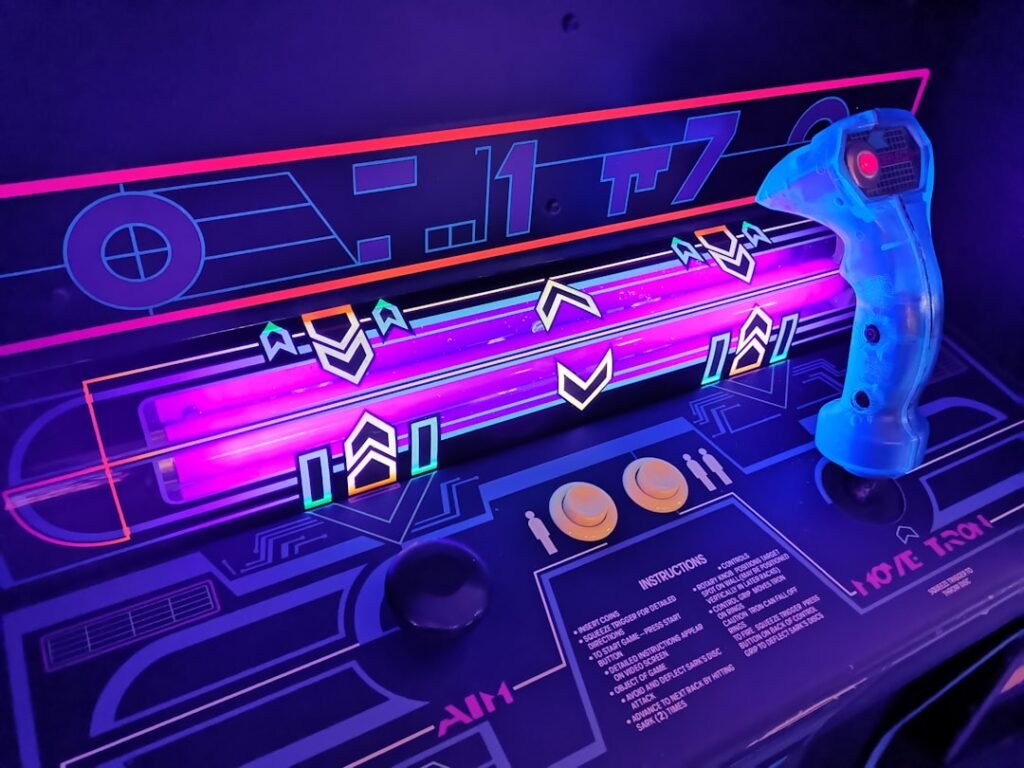Now Reading: Best Video Game Villains of All Time (Ranked)
-
01
Best Video Game Villains of All Time (Ranked)
Best Video Game Villains of All Time (Ranked)

As a passionate gamer, I have always been fascinated by the complex characters that populate the worlds of video games. Among these characters, villains often stand out as the most memorable and impactful. They are not merely obstacles to overcome; they embody the challenges and conflicts that drive the narrative forward.
From the sinister laughter of Bowser to the chilling presence of Sephiroth, video game villains have a unique ability to evoke a range of emotions, from fear to admiration. Their motivations, backstories, and personalities add depth to the gaming experience, making them integral to the stories we love. In many ways, video game villains serve as reflections of our own struggles and fears.
They challenge us, forcing us to confront our own values and beliefs as we navigate their treacherous worlds. The best villains are not just evil for the sake of being evil; they often have complex motivations that make them relatable, if not sympathetic. As I delve into the world of video game villains, I find myself drawn to their intricacies and the ways they shape our gaming experiences.
This article will explore the criteria for ranking these iconic characters, highlight some of the best villains in gaming history, and examine their lasting impact on popular culture.
Key Takeaways
- Video game villains play a crucial role in shaping the narrative and experience of gaming.
- The criteria for ranking the best video game villains include their impact on the storyline, their complexity, and their lasting impression on players.
- The top 10 video game villains of all time include iconic characters such as Bowser, Sephiroth, and GLaDOS.
- Honorable mentions go to villains that almost made the cut, such as Handsome Jack and Pyramid Head.
- Video game villains have had a significant impact on popular culture, influencing movies, TV shows, and even fashion.
Criteria for Ranking the Best Video Game Villains
Character Development: The Key to a Memorable Villain
A well-crafted villain should have a rich backstory that explains their motivations and actions. This depth allows players to understand why they do what they do, making them more than just a faceless enemy. Characters like Vaas Montenegro from “Far Cry 3” exemplify this criterion with their complex narratives that reveal layers of insanity and charisma.
Impact on Gameplay: Elevating the Gaming Experience
A truly memorable villain should not only challenge players but also enhance the overall gaming experience. This can be achieved through unique abilities, memorable boss battles, or even clever dialogue that leaves a lasting impression. For example, GLaDOS from “Portal” is not just a voice guiding players through puzzles; her dark humor and twisted personality create an engaging atmosphere that elevates the entire game.
Cultural Significance: Villains Who Transcend Their Games
Some characters transcend their games to become icons in their own right. The likes of Darth Vader or Joker have influenced not just gaming but also film and literature. Their designs, quotes, and actions resonate with audiences far beyond their original contexts. Thus, when ranking video game villains, I take into account how they have shaped the medium and left a mark on popular culture.
Top 10 Video Game Villains of All Time

As I reflect on my favorite video game villains, I can’t help but feel a sense of excitement in compiling a list that showcases their brilliance. At the top of my list is none other than Sephiroth from “Final Fantasy
” His long silver hair and iconic Masamune sword make him an unforgettable figure in gaming history. What truly sets him apart is his tragic backstory and complex motivations that blur the lines between heroism and villainy. His quest for power and identity resonates deeply with players, making him a timeless antagonist.
Following closely behind is GLaDOS from “Portal.” This AI antagonist is not only a formidable foe but also a source of dark humor throughout the game. Her witty one-liners and manipulative nature create an atmosphere of tension and intrigue that keeps players engaged. The way she toys with Chell, the protagonist, adds layers to her character that make her both terrifying and fascinating.
Another villain that deserves recognition is Andrew Ryan from “BioShock.” His philosophical ideals about free will and objectivism challenge players’ perceptions of morality within the game’s dystopian setting. Ryan’s charismatic yet tyrannical leadership makes him a compelling figure who forces players to question their own beliefs as they navigate Rapture’s underwater world. As I continue my list, I cannot overlook Bowser from the “Super Mario” franchise.
This iconic character has been a staple in gaming since the 1980s, representing the archetypal villain who constantly kidnaps Princess Peach. Despite his repetitive antics, Bowser’s charm lies in his larger-than-life personality and his ability to adapt over the years. He has evolved from a simple antagonist to a multifaceted character with moments of vulnerability.
Other notable mentions include Vaas Montenegro from “Far Cry 3,” who embodies chaos and unpredictability; Handsome Jack from “Borderlands 2,” whose dark humor masks his ruthless nature; and Albert Wesker from the “Resident Evil” series, whose cunning intelligence makes him a formidable adversary. Each of these villains brings something unique to their respective games, contributing to their status as some of the best in video game history.
Honorable Mentions: Villains that Almost Made the Cut
While compiling my list of top video game villains, I encountered numerous characters who almost made the cut but ultimately fell short for various reasons. One such character is Dr. Nefarious from the “Ratchet & Clank” series.
His over-the-top personality and comedic antics make him a fan favorite, but he lacks the depth found in some of the more prominent villains on my list. Nevertheless, his memorable quotes and entertaining battles keep players coming back for more. Another honorable mention is The Joker from “Batman: Arkham Asylum.” While he is undoubtedly one of the most iconic villains in pop culture, his portrayal in this particular game feels somewhat overshadowed by other characters like Scarecrow or Harley Quinn.
The Joker’s chaotic nature is captivating, but I found myself more drawn to the psychological horror elements presented by other antagonists in the game. I also considered M. Bison from the “Street Fighter” series.
His role as a powerful dictator and martial arts master makes him a formidable opponent in the fighting game genre. However, compared to other villains who possess more intricate backstories or motivations, Bison’s character feels somewhat one-dimensional. Still, his iconic status within fighting games cannot be denied.
Lastly, I must mention Ares from “God of War.” While he serves as an essential part of Kratos’s journey, his character lacks the complexity found in other villains like Zeus or Hades within the series. Ares represents raw power and aggression but does not possess the same level of emotional depth that resonates with players on a personal level.
The Impact of Video Game Villains on Popular Culture

The Cultural Significance of Iconic Villains
Characters like Bowser and Sephiroth have become an integral part of our collective consciousness, appearing on everything from T-shirts to birthday cakes. Their resonance with fans is a testament to their significance in shaping gaming culture, inspiring countless fan art pieces and cosplay events at conventions worldwide.
Villains as Moral Catalysts
Video game villains often serve as catalysts for discussions about morality and ethics within storytelling. Characters like Andrew Ryan challenge players to confront their beliefs about free will and capitalism while navigating Rapture’s dystopian landscape. This level of engagement encourages players to think critically about their choices and actions within games—a testament to the power of these antagonists.
The Lasting Legacy of Villains
Evolution of Video Game Villains: From 8-bit to HD
The evolution of video game villains reflects broader changes in technology and storytelling within the medium itself. In the early days of gaming, villains were often simplistic representations of evil—think of characters like Donkey Kong or Dr. Robotnik from “Sonic the Hedgehog.” These antagonists were primarily defined by their appearance and basic motivations: they were there to thwart our heroes without much depth or complexity.
As technology advanced into 16-bit and 32-bit eras, so too did our understanding of villainy in games. Characters like Ganondorf from “The Legend of Zelda” series began to exhibit more nuanced personalities and motivations. The introduction of cutscenes allowed developers to flesh out these characters further, giving players glimpses into their backstories and desires.
With the advent of HD graphics and more sophisticated storytelling techniques in modern gaming, villains have become increasingly complex figures that challenge players on multiple levels. Characters like Vaas Montenegro or GLaDOS showcase how far we’ve come in terms of character development—these antagonists are not just obstacles but integral parts of their respective narratives that evoke genuine emotional responses from players.
Controversial Villains: The Good, the Bad, and the Misunderstood
In my exploration of video game villains, I’ve encountered several controversial figures that spark debate among gamers and critics alike. One such character is Liquid Snake from “Metal Gear Solid.” While some view him as a compelling antagonist with a tragic backstory rooted in genetic manipulation, others argue that his motivations are convoluted and lack clarity. This duality makes him a fascinating subject for discussion among fans who appreciate his complexity while critiquing his execution.
Another controversial figure is The Boss from “Metal Gear Solid 3: Snake Eater.” Her role as both mentor and antagonist raises questions about loyalty and sacrifice within warfare narratives. Some players admire her depth and moral ambiguity; others find her actions difficult to reconcile with traditional notions of heroism. This complexity invites players to engage with themes of loyalty versus betrayal—an essential aspect of storytelling in video games.
Then there’s Handsome Jack from “Borderlands 2,” whose dark humor masks his ruthless nature as a corporate tyrant. While many appreciate his charismatic personality and memorable quotes, others argue that he perpetuates harmful stereotypes about villainy in gaming—particularly regarding mental health issues portrayed through his character arc.
What Makes a Memorable Video Game Villain
As I reflect on what truly makes a memorable video game villain, I realize it often boils down to a combination of factors: depth, relatability, impact on gameplay, and cultural significance all play crucial roles in shaping our perceptions of these characters. A great villain should evoke emotions—fear, anger, empathy—while challenging players’ beliefs about morality within their narratives. Moreover, memorable villains often possess unique traits or abilities that set them apart from others in their respective genres—whether it’s GLaDOS’s witty banter or Sephiroth’s iconic swordplay—these elements contribute significantly to their lasting appeal among fans.
Ultimately, what makes a villain unforgettable is not just their actions but also how they resonate with us as players—how they challenge us emotionally while pushing us toward growth within our gaming experiences. As I continue my journey through various virtual worlds filled with both heroes and villains alike, I find myself drawn ever closer to understanding what it means to be truly memorable within this dynamic medium we call gaming.
If you’re a fan of video games, you may also be interested in reading about the top 10 best co-op games for 2025 for ultimate multiplayer fun. Check out the article here to discover some exciting new games to play with friends.
FAQs
What makes a great video game villain?
A great video game villain is typically characterized by their compelling backstory, complex motivations, and their ability to challenge the player in a meaningful way. They often serve as the primary antagonist in the game’s narrative and are memorable for their impact on the player’s experience.
Who are some of the best video game villains of all time?
Some of the best video game villains of all time include characters such as Bowser from the Super Mario series, Sephiroth from Final Fantasy VII, GLaDOS from Portal, and Ganon from The Legend of Zelda series. These villains are known for their iconic status and their impact on the gaming industry.
What qualities make a video game villain memorable?
Memorable video game villains often possess qualities such as a unique and recognizable design, a compelling and well-developed personality, and the ability to create challenging and engaging gameplay experiences for the player. They also often have a lasting impact on the overall narrative of the game.
How do video game villains contribute to the overall gaming experience?
Video game villains contribute to the overall gaming experience by providing a sense of conflict and challenge for the player to overcome. They often serve as a driving force for the game’s narrative and can create memorable and emotional moments for the player. Additionally, they can add depth and complexity to the game’s world and lore.
What are some common archetypes of video game villains?
Common archetypes of video game villains include the power-hungry tyrant, the vengeful antagonist seeking revenge, the manipulative mastermind, and the tragic villain with a sympathetic backstory. These archetypes often serve as the foundation for creating compelling and memorable video game villains.



























